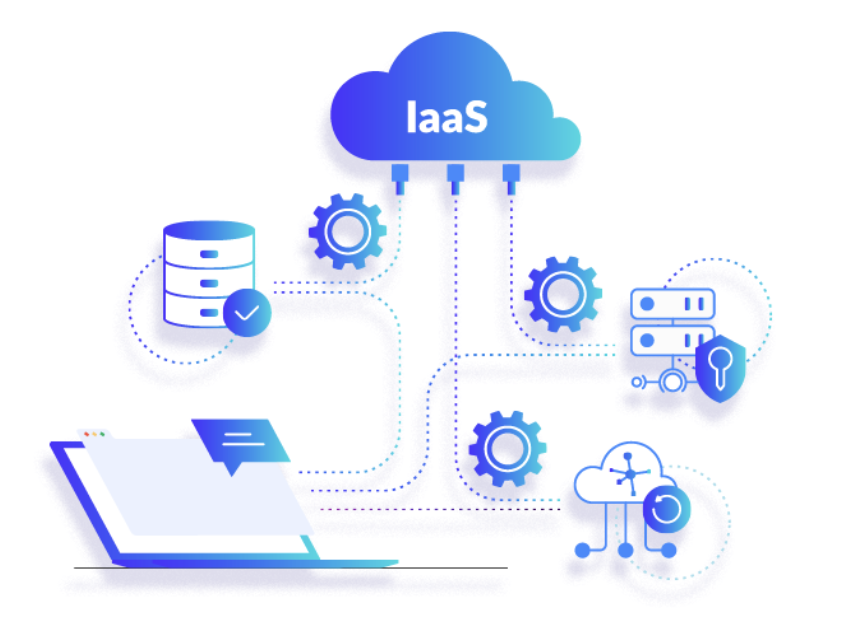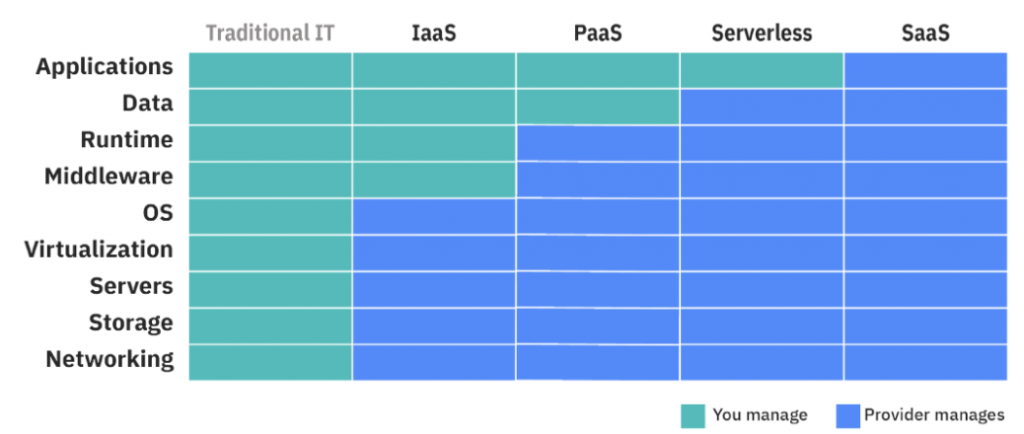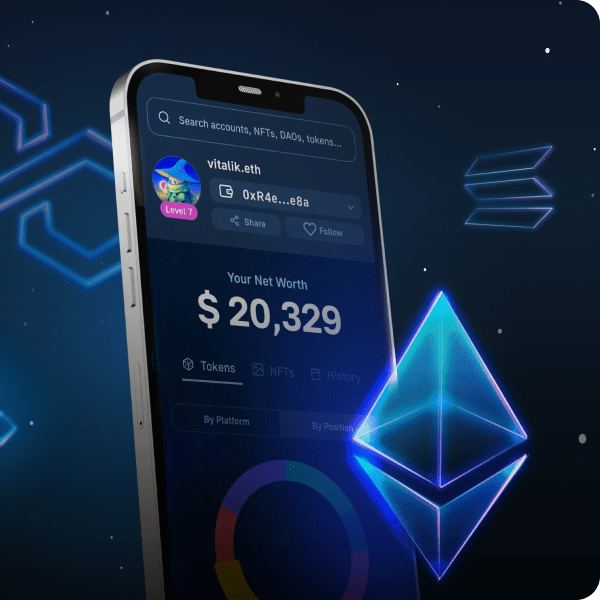Developers will know that manually setting up backend infrastructure can be a hugely time-consuming task. Not only does this require a lot of resources and time, it is also a costly endeavor. Moreover, many companies are also increasingly turning towards cloud solutions. Cloud services involve everything required to gain affordable and quick access to applications without the need for internal infrastructure. One of four categories of cloud services is infrastructure as a service (IaaS). IaaS vendors supply customers with essential storage, compute, and networking resources on demand. Utilizing IaaS can be highly beneficial for any organization; as such, we’ll look closer at what infrastructure as a service is and the best IaaS vendor for your Web3 development – Moralis.
Creating, managing and maintaining a backend infrastructure is a complex process. For this reason, migrating or basing an organization’s infrastructure on an IaaS solution makes it possible to circumvent some of these costs. Therefore, utilizing an IaaS solution could well be the alternative that makes the most sense, and even more so in a Web3 environment. Web3 is still relatively new, which means that there is a lack of tools for easily configuring backend infrastructure. However, luckily for you, this is precisely what Moralis does.
In a time where dApp (decentralized application) development is flourishing, people are demanding solutions that enable a quicker and easier way to develop these applications. This is where Moralis enters the picture and is the best Web3 platform to offer IaaS. Moralis provides users with a fully functioning backend infrastructure. As a result, dApp developers have the opportunity to focus on their frontend and smart contracts and move to the market quicker than ever. So, if you want to develop dApps quickly, sign up with Moralis now!
What are Cloud Services?
In the initial paragraph, we mention that there are four different types of cloud services – one of which is Infrastructure as a Server, or IaaS. However, in this section, we’ll look closer at the whole concept of cloud services and the additional three alternatives.
As there are four different types, the generic term ”cloud services” refers to a wide range of different services. The purpose of all these services is to provide customers with affordable, accessible, quick access to resources and applications without needing internal infrastructure or hardware.

These services are provided and managed by cloud computing vendors. The vendors keep all these services available to the customers through their own servers. As a result, the customers do not need to host apps on their own servers.
The other three types of cloud services are software as a service (SaaS), platform as a service (PaaS), and serverless:
- SaaS – SaaS means that the vendors offer a complete software solution. As such, they provide everything from middleware, software, infrastructure, and much more. An example of such a service is Dropbox.
- Serverless – Utilizing serverless computing allows customers to only focus on the application code itself. As such, developers can focus on creating single functions of the app while the vendor takes care of the app layer managing the functions. However, if you are interested in reading more about serverless computing, check out the following article that answers the question ”What is Serverless Computing?”.
- PaaS – When it comes to PaaS, the vendors don’t provide services to the same extent. The vendors still take care of development tools, middleware, database management, etc. However, more responsibilities and tasks need to be handled by the customers.
So, with an overview of what cloud services are, we can move on to the main topic of this article – IaaS.
What is Infrastructure as a Service (IaaS)?
We began touching earlier on what infrastructure as a service is; however, let’s take a closer look at what this means and how the service supports developers in their endeavors.
IaaS is a service supplied by vendors that provides users with fundamental storage, compute and networking resources. This means that the services offered consist of both physical and virtual parts. These essential parts of application development are provided by the vendors on-demand, and they usually follow a ”pay-as-you-go” basis.

Such an arrangement allows developers to scale and customize computing resources with a much higher degree of freedom. The reason for this is that this model will enable vendors to charge customers based on the actual resources spent. This means that it is possible to both scale and shrink resources based on the actual need. As a result, developers/companies only have to pay for what they need and eliminate high, up-front expenditures.
For conventional Web2 development, the number of alternative IaaS vendors is vast. Some of the most popular providers are Microsoft Azure, IBM, Amazon Web Services, and, of course, Google Cloud. These are all well-established giants on the market, making the competition fierce.
The alternatives for Web3 development do not reach the same numbers. However, there are alternatives on this market just as valid and providing the same degree of service quality. Of course, as this is an entirely different development domain, the services differ somewhat, but the fundamentals are the same. All you need to know is that one of the best IaaS vendors/providers for Web3 development is Moralis, and provides all the tools you’ll need for swift dApp development. As such, Moralis combines all of the advantages with an IaaS and serverless infrastructure.
What is Moralis?
The Web2 development scene is characterized by well-established cloud service vendors. Meanwhile, Web3 development isn’t blessed with the same diverse selection of options. However, this is not a significant problem as Moralis fills this gap perfectly and provides everything you need from an IaaS!
Moralis offers a complete solution when it comes to Web3 development. Consequently, this means that the platform gives you access to everything you need to develop and deploy dApps.

Furthermore, Moralis is of a modular design; this means that all the functionality and tools of the platform are optimal. As such, you can either integrate Moralis with your already existing infrastructure or choose to use Moralis as a full IaaS provider. This further means that Moralis can provide a complete solution with a fully managed and scalable backend infrastructure.
Using the IaaS solutions provided by Moralis will allow you to save valuable time and resources when developing. The main reason for this is that backend development on the decentralized web can be quite complicated. So, with Moralis, you can focus on building smart contracts and the frontend of your application; meanwhile, the platform does all the heavy lifting behind the scenes.
Furthermore, the platform offers other great tools that significantly speed up the development process. With tools such as Speedy Nodes, the Moralis NFT API, the Moralis Price API, etc., it is possible to reduce the time to market from months to only days. Moreover, you can also find excellent development tutorials on the Moralis YouTube channel.
To quickly summarize, Moralis as an IaaS vendor provides you with a state-of-the-art infrastructure enabling you to save time and increase productivity within your organization. So, if you are thinking about becoming a dApp developer, the most natural choice is to sign up with Moralis today!
Main Advantages of Infrastructure as a Service (IaaS)
Configuring and setting up a complete infrastructure can be a formidable task. It requires both recourse and time. This can be quite the hassle, and one way to avoid this problem is to purchase the services of an IaaS vendor. So, let’s look closer at how an IaaS vendor can help organizations and what benefits these services provide for the customers:
- Scale and Performance — It is not uncommon that applications experience unexpected spikes in demand, and with IaaS, it is easier to scale both apps and dApps. Part of the reason for this flexibility is the pricing strategy ”pay-as-you-go”.
- Cut Costs — With IaaS, it is possible to significantly lower costs as we can avoid setting up and managing physical data centers. Furthermore, this pricing model allows organizations to cut down on hardware expenditures as we only pay for what we use.
- Reliability and Stability — With the right IaaS vendor, you don’t need to worry about maintaining and upgrading software or hardware as the supplier deals with all these issues. Furthermore, the vendors also deal with troublesome equipment, leaving you to develop other parts of your application.
- Innovation — With IaaS, the route to market is significantly shorter as infrastructure can become available and ready in just minutes instead of days. So, if we have a dApp idea, it is possible to launch much faster and maybe gain a first-mover advantage.
- Security — IaaS might provide a higher degree of security for all your applications. However, this all depends on the vendor, but a vast majority of them can supply better security than could be attained in-house.
Infrastructure as a Service vs PaaS, SaaS, and Serverless Computing
In a previous section, we briefly touched on the differences between the components of cloud services. To distinguish between these four services, it is easiest to look at which parts of the stack that are managed by the vendor and what parts the consumers need to handle themselves.
Looking from a historical perspective, the end-users had to manage the complete stack from end to end. This would include everything from hardware, operating systems, middleware, virtualization, etc. However, as we looked at earlier, the advantages of cloud services are quite impressive and useful.
The different ”-as-a-Service” components of cloud services offer a progressive layer of abstraction. At the top of the hierarchy is traditional development, where you would manage everything, and at the bottom is SaaS, where the vendor takes care of an entire application. In between we have IaaS, PaaS, and Serverless. So, what do you need to manage with the different services, and what does the vendor actually do?

When using an IaaS solution, all the physical compute, storage, and networking resources, along with the tech to virtualize them, are provided by the vendor. This means that you would need to manage the application, data, runtime, and middleware. PaaS is the next step outsourcing more responsibility to the vendors. This means that the suppliers additionally take care of middleware, runtime, and operations systems. Then we have serverless computing that abstracts away even more, leaving you only to manage the application code itself. And lastly, in SaaS, a complete solution is provided to the users; as such, the vendor takes care of everything. An example here is services such as Dropbox and Microsoft Office 356.
So, the main distinction between these services is the amount of work outsourced to the vendors.
What is Infrastructure as a Service (IaaS)? — Summary
In the early days of web development, developers needed to take care of the whole development process themselves. This meant everything from setting up physical servers and hardware to managing the frontend of their applications. Setting up a complete infrastructure for an application can be quite a resource- and time-intensive process. As such, a variety of vendors offering cloud services emerged.
There are four different types of cloud services, SaaS, PaaS, Serverless, and IaaS. Each of these offers a different level of provided services ranging from the vendors taking care of the complete process with SaaS, to IaaS where more is up to the service-users.
IaaS is an abbreviation for infrastructure as a service, and if this service is purchased, the vendors supply developers with physical compute, storage, network, and technology needed to virtualize all these resources. As such, the vendors provide customers with an infrastructure for their applications.
There are many advantages of outsourcing these parts of the development process. Some include cutting costs, better scalability, and the opportunity to innovate with a much faster time to market.
Furthermore, the best infrastructure as a service vendor for Web3 development is doubtlessly Moralis. Moralis is the number one platform for developing dApps, and the platform provides an already managed backend infrastructure for its users. This means that users can draw from the benefits of IaaS, such as cutting costs and reducing the time to market.
Moreover, Moralis also offers a wide selection of development tools such as native support for IPFS, MetaMask, cross-chain compatibility, and several helpful guides on the Moralis blog.
So, if you want to develop dApps, the ultimate solution is to sign up with Moralis today! As you sign up, you will get full access to all the platform’s development tools and can immediately start developing.
